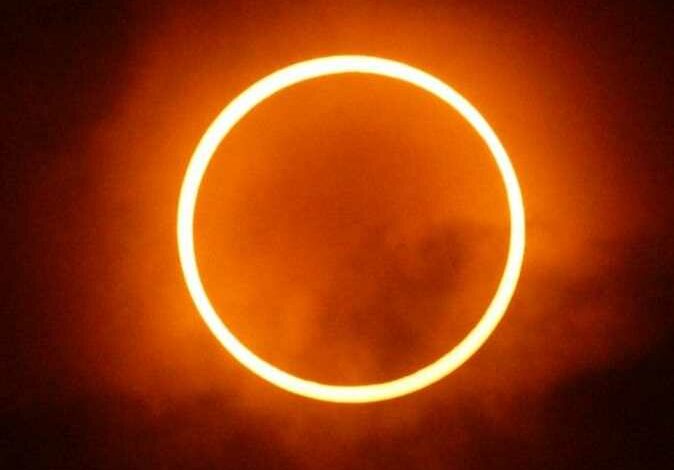
The last solar eclipse in 2023 is due in ten days, visible across the world – excluding Egypt. It is the second solar eclipse this year, and will be followed by a lunar eclipse.
According to NASA, this annular eclipse known as the “Ring of Fire,” will affect parts of the Earth on Saturday, October 14, including the US, Mexico, Colombia, Brazil, South America, and Central America.
While the eclipse will be seen partially in West Africa, North America, the Pacific Ocean, the Atlantic Ocean, and the Arctic continent, the National Research Institute of Astronomy and Geophysics (NRIAG) confirmed that the solar eclipse will not be seen in Egypt.
A solar eclipse occurs when the moon passes between the sun and the Earth, so the sun, the moon, and the Earth all lie on the same line.
During the eclipse period, the moon temporarily covers the disk of the sun, casts its shadow on the Earth, and blocks the sun’s rays for a short period.
It may block it completely, partially, or annularly.
Ring of fire
During an annular eclipse, the moon does not cover the entire disk of the sun, causing a ring of light to appear around the moon. The path of the eclipse will begin in the Pacific Ocean off the coast of southern Canada and move across the southwestern US, Central America, Colombia, and Brazil, according to Ashraf Tadros, professor of astronomy.
Tadros explained that the partial eclipse will be visible in most parts of North and South America and the western part of the continent of Africa.
When the solar eclipse occurs on October 14, the moon will cover about 95 percent of the entire disk of the sun.
The eclipse will take approximately five hours and 52 minutes from its beginning to its end, while the annular eclipse will take five minutes and 17 seconds.
Lunar eclipse will be visible in Egypt
The occurrence of a lunar eclipse always coincides with a solar eclipse, as the Earth will witness a partial eclipse on October 28, corresponding to the Islamic month of Rabi’ al-Akhir 13, 1445, coinciding with the full moon of the month of Rabi’ al-Akhir 1445.
This lunar eclipse will be visible in Egypt.
During the eclipse, the Earth will cover approximately 12 percent of the moon’s surface. All stages of the eclipse from its beginning to its end will take approximately four hours and 25 minutes, while the eclipse from the beginning of the first partial eclipse until the end of the second partial eclipse will take approximately an hour and 17 minutes.
A lunar eclipse only occurs when the moon is full, wherein the Earth is between the sun and the moon, and the Earth’s shadow falls on the moon.
The next lunar eclipse will be visible in Egypt, as well as Europe, Asia, Africa, North America, northern and eastern South America, the Pacific Ocean, the Atlantic Ocean, the Indian Ocean, the Arctic continent, and Antarctica.
The first solar eclipse in 2023 occurred on April 20, when the Earth witnessed a rare type of eclipse called a “hybrid eclipse,” and could not be seen in Egypt.
The first lunar eclipse on May 5 was a semi-shadow eclipse not visible in Egypt either.




